Ukraine 2005.At the time of my visit to Ukraine in 2005, I'm afraid I was completely ignorant about Russian Railway Signalling practice.
Driving Steam in Ukraine (Part 1).
Driving Steam in Ukraine (Part 2).
Driving Steam in Ukraine (Part 3).
Driving Steam in Ukraine (Part 4).
Driving Steam in Ukraine (Part 5).
Railway Workshops in Kiev.
On my visit to the Wolsztyn Experience in Poland in 2003, I'd seen a mixture of semaphore and colourlight signalling (there's a brief post on that trip here) but in Ukraine I only saw colour light signals with electric operation of points.
Signalling at Mikulichin, Ukraine
On Wednesday 26th October 2005, we made our first trip on the single line from Kolomiya to Vorokhta. There's a description of this trip here. We had a wait of around two hours at Mikulichin, awaiting a 'path' onwards to Vorokhta. We spent some time exploring the minor road through Mikulichin before returning to the fairly isolated station, where the friendly lady Stationmaster allowed me to study the signalling and telecommunications facilities.
 The friendly lady stationmaster at Mikulichin allowed me to study the signalling and telecommunications facilities.
The friendly lady stationmaster at Mikulichin allowed me to study the signalling and telecommunications facilities.
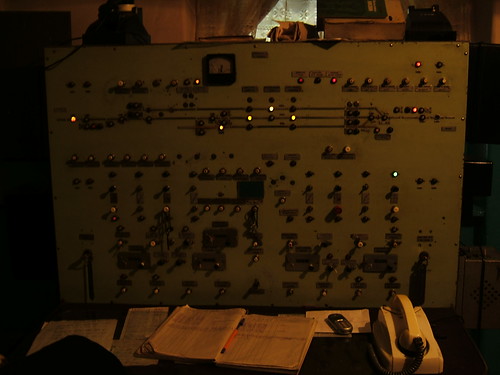 Detail of the signalling control panel at Mikulichin.
Detail of the signalling control panel at Mikulichin.
A couple of Linemen were working in the relay room adjacent to the Stationmaster's Office, so I managed a few pictures of the relay racks.
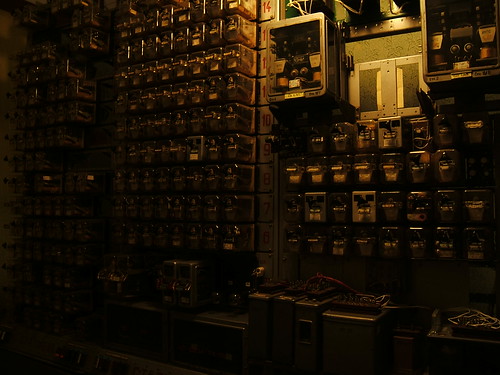 The signalling relay room at Mikulichin.
The signalling relay room at Mikulichin.
On Thursday 27th October 2005, the format of the day was similar but this time the run was terminated at Mikulichin. There's a description of this trip here. Whilst waiting for our return 'path' I studied the outside equipment - signals and points.
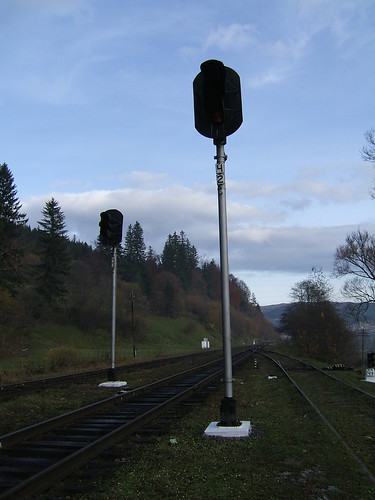
High level 3-aspect colour light 'Exit' signals on running lines.
 Low level 3-aspect colour light 'Exit' signal on siding, with motor-operated trap points in background.
Low level 3-aspect colour light 'Exit' signal on siding, with motor-operated trap points in background.
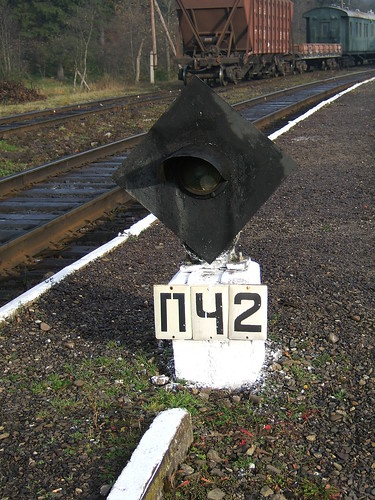
Another form of low level signal.
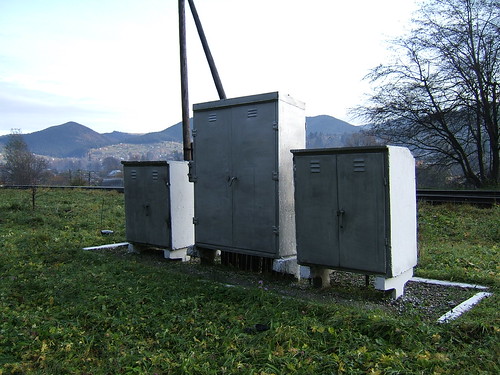 Typical group of trackside equipment cases.
Typical group of trackside equipment cases.
Russian Railway Signalling Practice
Because Ukraine was part of the U.S.S.R. before its dissolution in 1991, signalling in Ukraine reflects Russian practice. The U.S.S.R. and Communist states like China developed largely separately from European railways. OSShD is the Romanisation of the Russian initials 'ОСЖД' - the 'Organisation for the Combined Operations of Railways', referred to as OSSHD in some places. However, this organisation is also referred to as the Organisation for Co-operation between Railways (OSJD).
Wolfgang Meyenberg's site (although not, apparently, being updated) has a simple-to-understand section on signal aspects in the OSSHD/OSJD here.
The Signal Page was started in 2003 in Holland and claims to be the world's largest website on railway signalling systems worldwide. From the index page you can select a variety of articles (not all in English). A good starting point is J. B. Calvert's article here.
Related posts on this website
In 2011, a river cruise from Moscow to St. Petersburg (described in a series of posts here) gave me tantalising glimpses of railways in Russia. Then, in 2011, I travelled by the 'Golden Eagle' private train from Ulaan Baatar to Moscow (described in a series of posts here).
Photographs
Signalling at Mikulichin, Ukraine.
